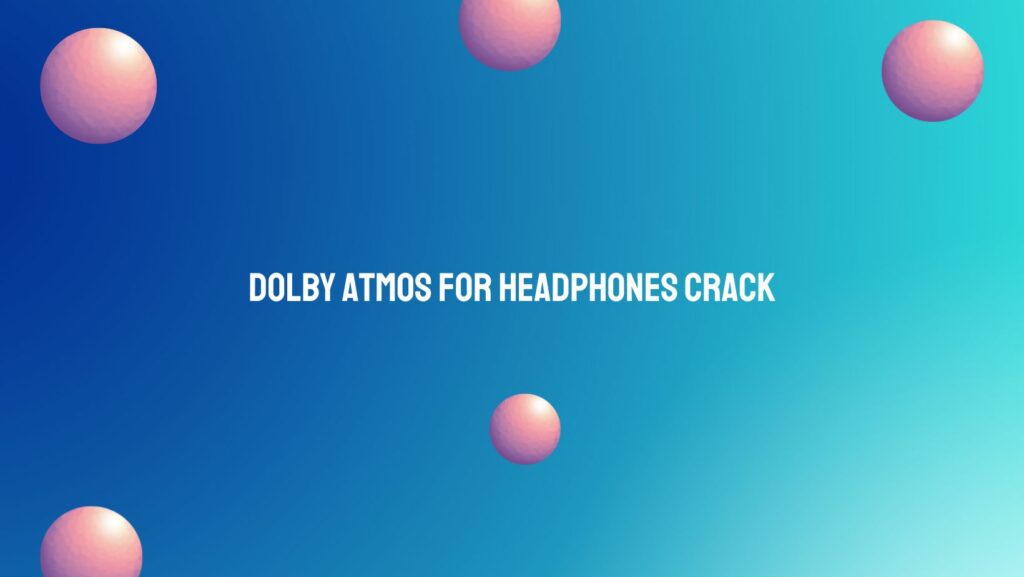In the realm of audio enthusiasts, Dolby Atmos for headphones is hailed as a revolutionary technology, promising an immersive auditory experience that transcends traditional stereo sound. However, a controversial element has emerged in the form of Dolby Atmos for headphones cracks – unauthorized versions of the software that claim to provide the coveted three-dimensional sound experience without the official purchase. In this exploration, we delve into the nuances of this contentious issue, discussing the potential risks, ethical considerations, and the impact of such cracks on the audio community.
Understanding Dolby Atmos for Headphones Cracks:
- The Appeal of Dolby Atmos: Dolby Atmos for headphones has gained popularity for its ability to simulate three-dimensional audio, creating an immersive experience that captivates users. This technology, officially provided by Dolby Laboratories, is designed to work in tandem with compatible headphones, offering a heightened sense of spatial awareness and directionality.
- Cracks and Unauthorized Versions: Dolby Atmos for headphones cracks refers to unofficial versions of the software that circulate online, often claiming to provide the same Dolby Atmos experience without the need for a legitimate purchase. These cracks are typically distributed through unofficial channels, allowing users to bypass the official licensing requirements.
Potential Risks and Consequences:
- Legal Implications: The use of Dolby Atmos for headphones cracks raises significant legal concerns. Dolby Laboratories holds intellectual property rights over its technologies, and the distribution or use of unauthorized versions constitutes a violation of copyright laws. Users engaging in such practices may face legal repercussions, including fines or legal action from Dolby Laboratories.
- Compromised Performance: Dolby Atmos for headphones cracks may not deliver the promised performance or security assurances of the official software. Users who opt for unauthorized versions risk compromising their audio experience, encountering glitches, and potentially exposing their devices to security vulnerabilities.
Ethical Considerations:
- Intellectual Property Respect: Engaging with Dolby Atmos for headphones cracks raises ethical questions about the respect for intellectual property. Dolby Laboratories invests significant resources in developing and refining its audio technologies, and unauthorized use undermines these efforts.
- Supporting Innovation: Supporting official channels by purchasing legitimate copies of Dolby Atmos for headphones contributes to the continued innovation and development of cutting-edge audio technologies. By investing in authorized software, users help sustain a thriving audio industry that benefits both consumers and creators.
Impact on the Audio Community:
- Stifling Innovation: The proliferation of Dolby Atmos for headphones cracks may have broader implications for the audio industry. Unofficial distribution can stifle innovation by undermining the revenue streams that support ongoing research and development in audio technologies.
- Community Dialogue: The Dolby Atmos for headphones crack controversy prompts a broader dialogue within the audio community about the importance of respecting intellectual property rights, ethical considerations in technology usage, and the long-term impact of unauthorized practices on the industry.
Conclusion:
While the allure of Dolby Atmos for headphones is undeniable, engaging with cracks and unauthorized versions carries significant risks and ethical considerations. The potential legal consequences, compromised performance, and impact on the broader audio community underscore the importance of respecting intellectual property rights and supporting official channels. As the audio community navigates this controversy, fostering a culture of ethical technology usage and responsible innovation becomes paramount for the continued growth and advancement of audio technologies.


